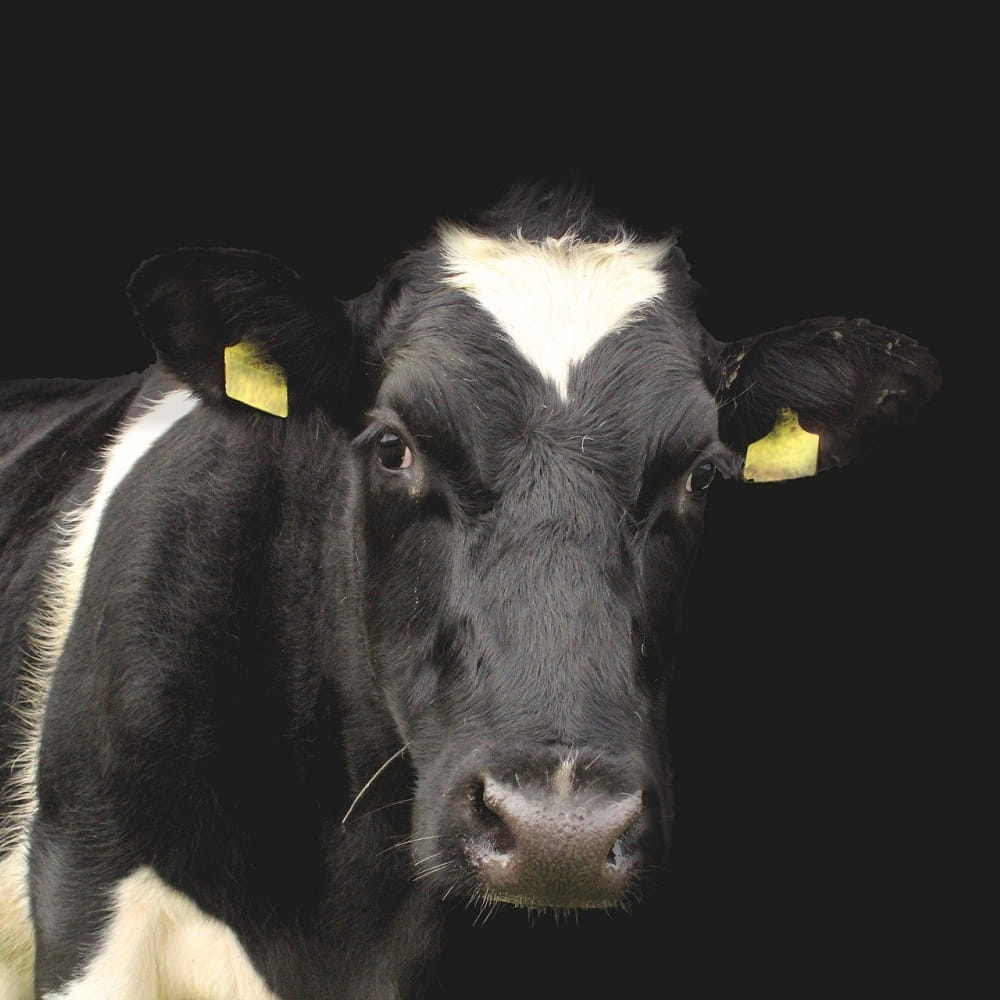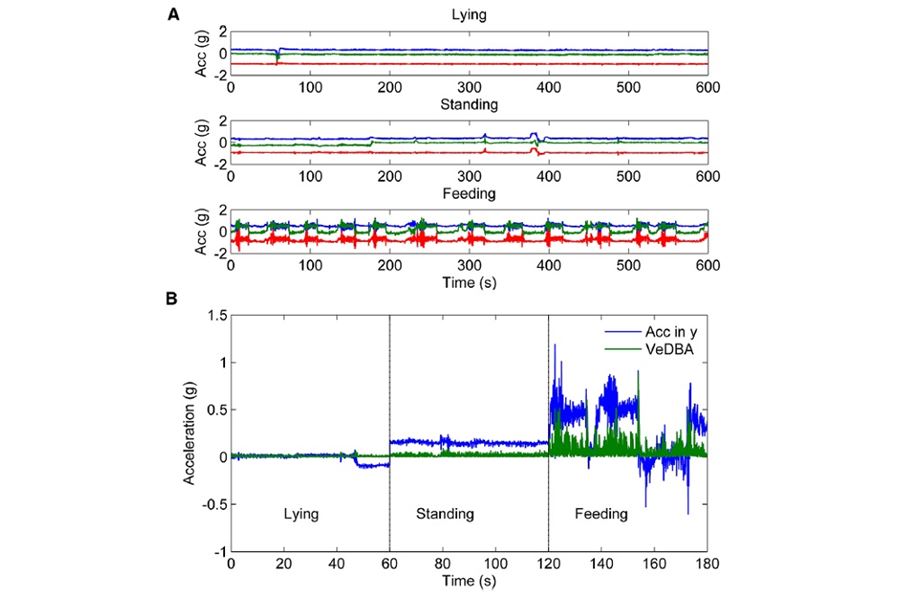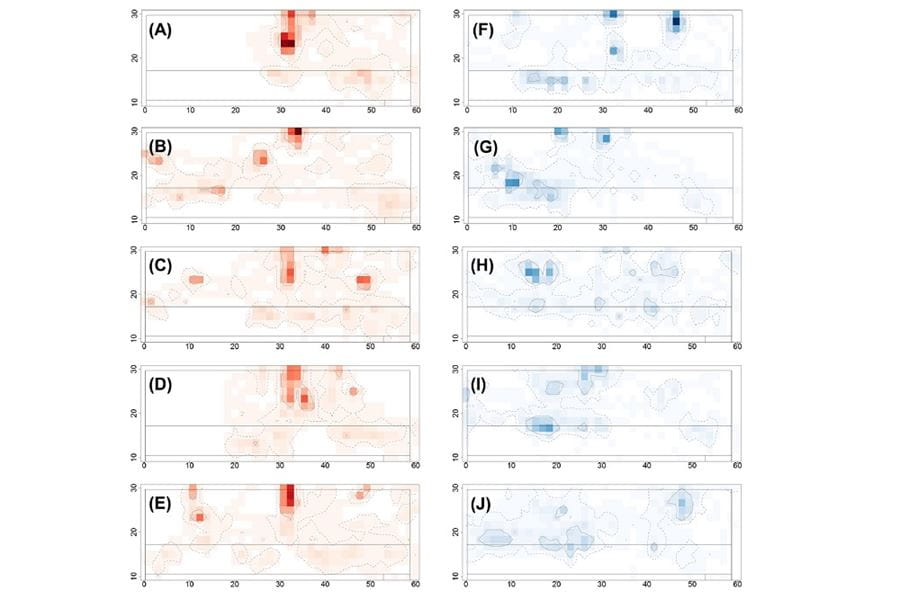Finding patterns in animal behaviour data
Animal welfare in the farming industry is an increasingly important issue.
The UK dairy industry is worth billions of pounds to the UK economy and accounts for nearly 20% of all UK agricultural production by value. Given the recent rapid pace of environmental change and population growth, issues around food security, sustainability, and animal welfare are receiving increasing attention.
One of the key factors that can affect milk production is the health and welfare of individual cows, but increasing herd sizes makes it difficult for farmers to continuously monitor all their animals individually for any changes in their status. Hence there is a need for methods that can automate the detection of welfare problems and the early signs of disease or illness within dairy herds and individual cows.
In this ongoing project we use automated data collection techniques to record patterns of space use, movement, and social interactions within commercial dairy herds. Working closely with our industry partner, Omnisense Ltd, we attach wireless tracking sensors to every individual cow within the herd. Each tracking sensor records both spatial location (through network triangulation) and activity (through an inbuilt tri-axial accelerometer) in real time at high temporal resolution (0.1-0.125 Hz) continuously for several months.
The location and activity data are analysed using mathematical, statistical and computational techniques in order to detect changes in individual (and herd-level) cow behaviour that can be used to predict changes in health and welfare. Our ultimate goal is the development of an on-farm automated ‘early warning’ system for disease detection.
Results have been promising with several studies identifying key behavioural differences between lame and non-lame cows. We found lame cows used the space within the barn differently, spending less time in the feeding area, revisiting the same sites more frequently, and they also had a smaller range within the barn. We are now exploring how changes in behaviour may occur over time and at the onset of lameness or other important diseases such as mastitis.
Our sensor system also allows us to determine which cows are interacting with each other, and enables us to build up a herd-level social network for each day. By looking at the position of each individual cow within the network, and how this changes over time, we may be able to find if changes in social position or social interactions within the herd relate to health and welfare. Results so far suggest that although the social structure of the herd is highly dynamic, there are differences in social clustering that are linked to lameness.
Finally, more recent work has involved using the sensor system to detect and predict the onset of calving in both beef and dairy cows. Calving is a key event for farmers, and it is important that they are able to determine both when a cow is likely to calve, and whether she may need assistance. Our automated detection methods allow us to collect and analyse enormous amounts of data about cow behaviour just before calving, and we are using these to develop better predictive models of calving that farmers can use.
Funding and partners
This project was originally funded by the Biotechnology and Biological Sciences Research Council (BBSRC) and involves collaboration between University of Essex, Writtle University College, University of Exeter, and the Royal Veterinary College, with industry partner Omnisense Ltd.
Additional PhD studentships exploring social networks in dairy herds were funded by the Farm Animal Welfare Trust and a University of Essex faculty scholarship.
Further funding to study behaviour pre-calving was awarded by the Natural Environment Research Council (NERC) in collaboration with Dr Carol-Anne Duthie from Scotland's Rural College (SRUC).
Papers
Miller, GA., Mitchell, M., Barker, ZE., Giebel, K., Codling, EA., Amory, JR., Michie, C., Davison, C., Tachtatzis, C., Andonovic, I. and Duthie, C-A., (2020). Using animal-mounted sensor technology and machine learning to predict time-to-calving in beef and dairy cows. Animal. 14 (6), 1304-1312
Barker, ZE., Vázquez Diosdado, JA., Codling, EA., Bell, NJ., Hodges, HR., Croft, DP. and Amory, JR., (2018). Use of novel sensors combining local positioning and acceleration to measure feeding behavior differences associated with lameness in dairy cattle. Journal of Dairy Science. 101 (7), 6310-6321
Vázquez Diosdado, JA., Barker, ZE., Hodges, HR., Amory, JR., Croft, DP., Bell, NJ. and Codling, EA., (2018). Space-use patterns highlight behavioural differences linked to lameness, parity, and days in milk in barn-housed dairy cows. PLoS ONE. 13 (12), e0208424-e0208424
Vázquez Diosdado, JA., Barker, ZE., Hodges, HR., Amory, JR., Croft, DP., Bell, NJ. and Codling, EA., (2015). Classification of behaviour in housed dairy cows using an accelerometer-based activity monitoring system. Animal Biotelemetry. 3 (1)








